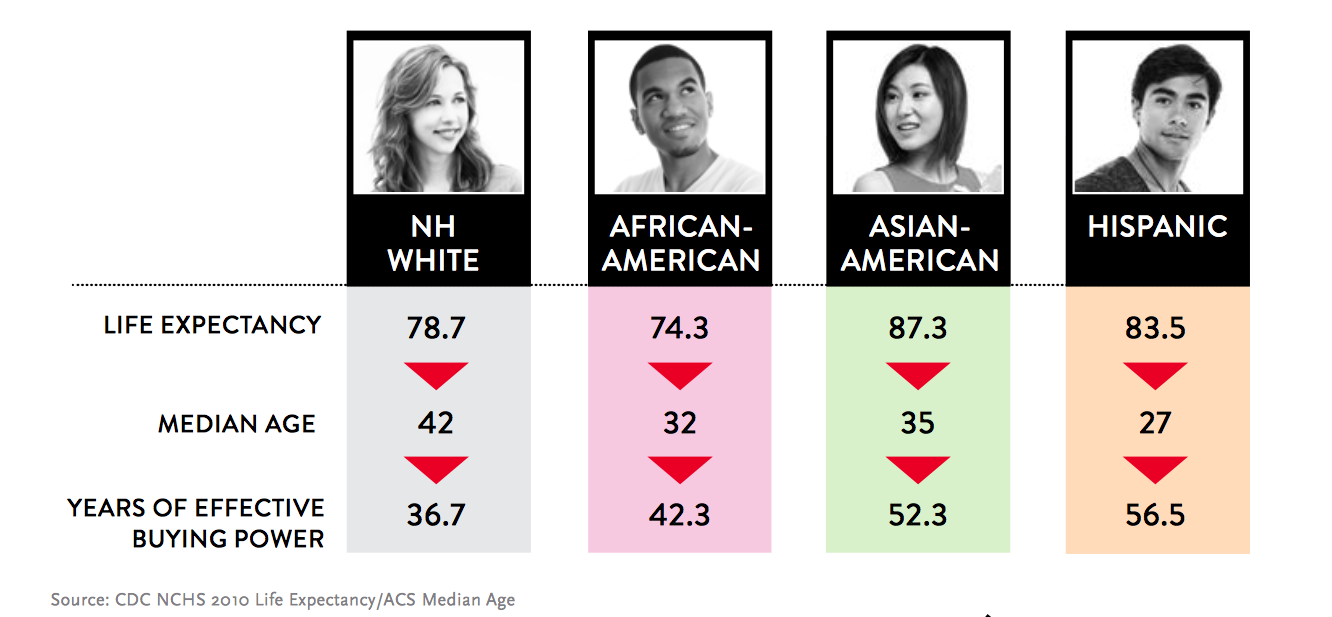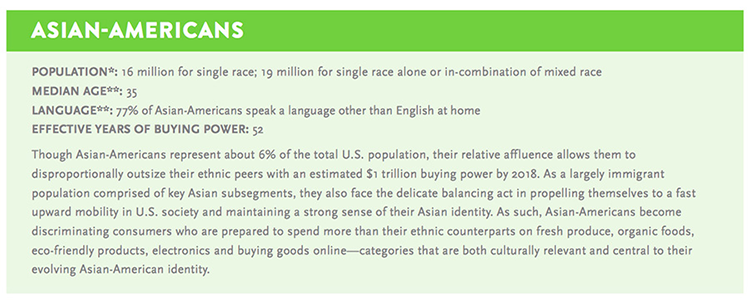The Buying Power of Asian Americans
In a Nielsen study done in 2015, it was determined that 77% of Asian Americans speak a language other than English at home. In fact, more than 8 million people living in America are speaking Chinese (3.3 million), Tagalog (1.7 million), Vietnamese (1.5 million), and/or Korean (1.1 million) and 40% of those people say they speak English less than very well.
Buying Power Statistics of the Asian American Population
Asian Americans represent about 6% of the total U.S. population, or the equivalent of 5.5 million people; however, that number doesn’t do justice to the size of their buying power.
By 2018, Asian Americans are projected to hold an estimated $1 trillion buying power, or 52.3%. Further, the average family income earned by the Asian American population is more than $20,000 higher than the U.S. average family income, which was $70,697.
The study further defines the types of products and services that Asian Americans buy. With a particular interest in fresh produce, organic foods, eco-friendly products, and electronics, Asian Americans are known to be rather selective shoppers who prefer to buy online.
Businesses that understand the Asian American market can use their resources to stay ahead of their competition. Unlike Hispanic Americans, who mostly share one language, Asian Americans comprise different cultures, with different languages, making it difficult to deliver a culturally sensitive message.
3 Things to Consider When Incorporating the Asian American Market in your B2B and B2C Strategies
Some of the best ways to include the Asian American market in your business strategies include:
- Understand the cultural nuances within. Something that works for one market, or even one segment within a market, may not work for all and offending or alienating customers with high buying power could compromise market share and waste advertising dollars.
- Translate messages and information. Personalizing experiences for the Asian American market through translation and localization instantly enhances product and services loyalty. Recently Starwood hotels added in-hotel Chinese specialist and packets of translated local area information including shopping, sightseeing and key hotel information to improve the service offering for their non-English speaking travel guests.
- Don’t stereotype. Stereotyping may seem like an easy way to market to a group you don’t know much about but it can lead to sensitivities that can create an uproar for your brand.
Bridging Language Gaps Can Make for More Human Relationships with Business and Consumers
Finally, and certainly more important, remember that before we are a race and before we speak a language, we are human. And humans have values that are rather universal. Depending on which psychologist you read, values may include happiness, love, freedom, safety, respect, health, among others.
The work we do at NWI Global is intending to facilitate the relationships that bring those values to your life and we feel that language makes that possible. Whether it’s interpret a dialect, translating from English to Korean, or using signs with our hands, we are connecting businesses with consumers, students with knowledge, workers with job, and families with each other.
We are proud to do the work we do.



Leave a Reply
Want to join the discussion?Feel free to contribute!